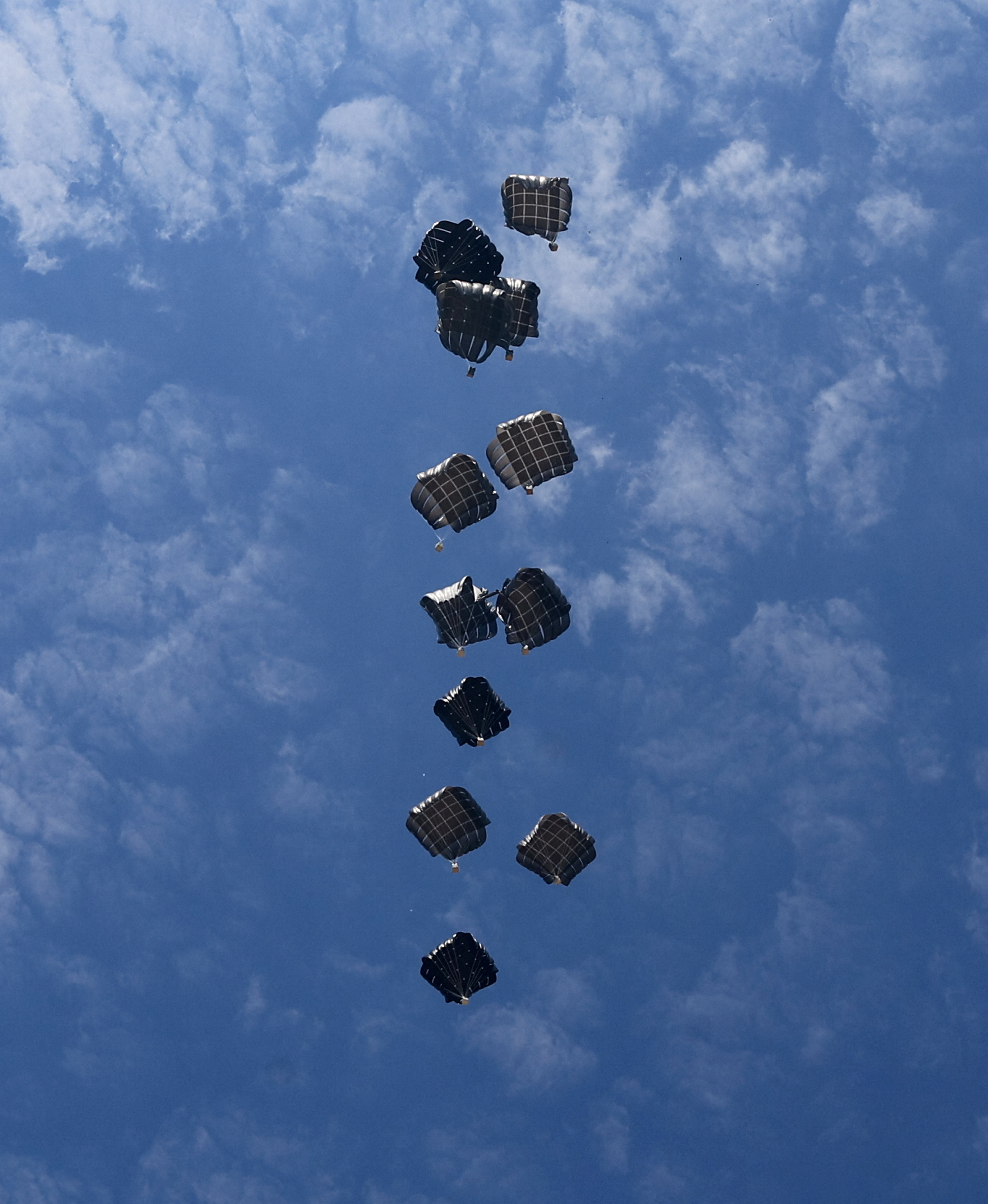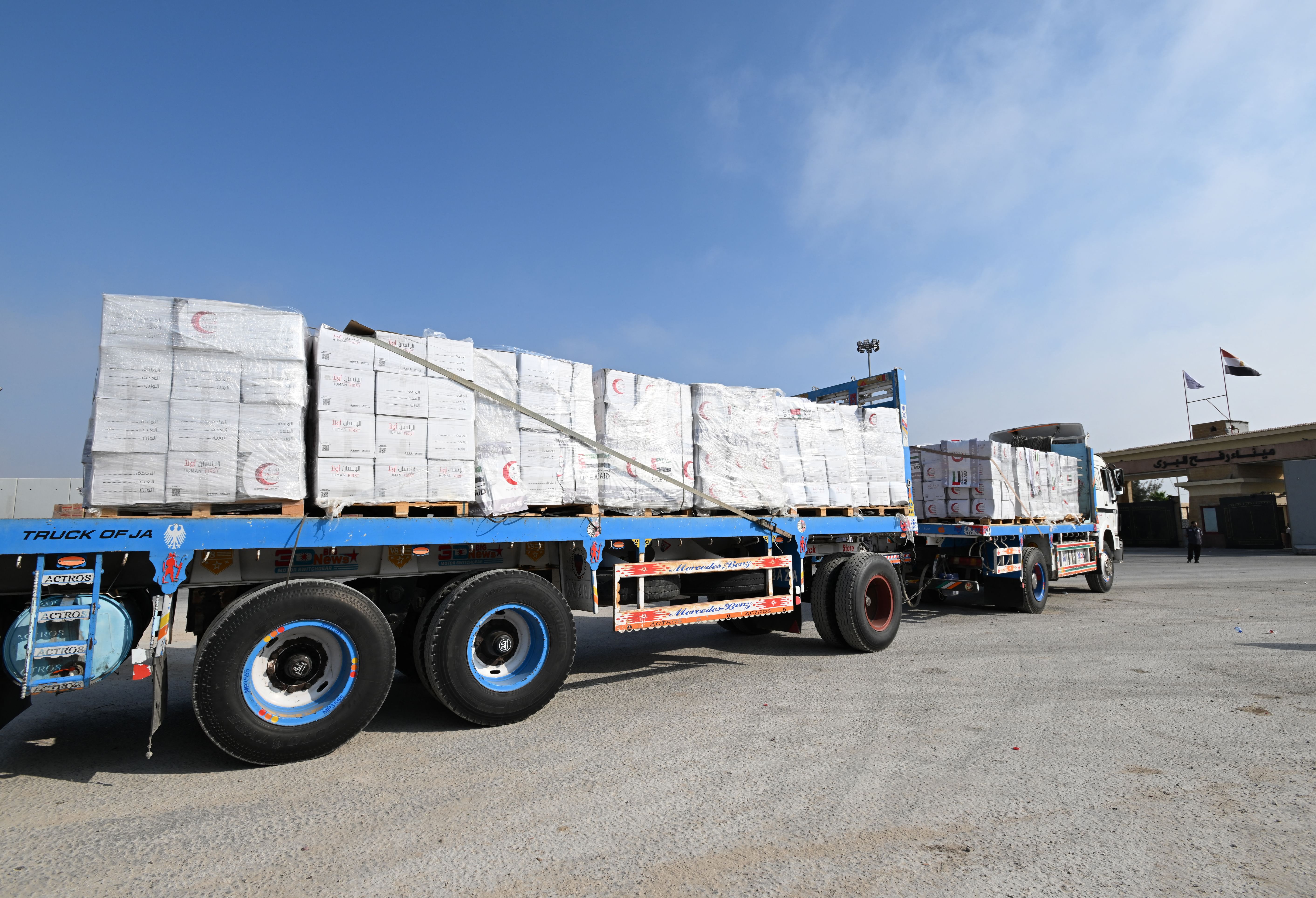Can air drops solve the Gaza crisis? Aid agencies are sceptical

The UK is set to join Jordan and the United Arab Emirates in air dropping aid into Gaza as starvation and malnutrition have reached perilous levels in the war-torn strip.
Following pressure from the international community, Israel has announced brief “humanitarian pauses” between 10am and 8pm each day to allow more aid to be delivered to starving Palestinians, as US president Donald Trump said on Monday: “They have to get food and safety right now.”
The World Health Organisation has warned that malnutrition is on a “dangerous trajectory” in the Gaza Strip, with 63 deaths in July. Around one in five small children in Gaza City are now acutely malnourished, according to the UN’s Palestinian refugee agency (Unrwa).
Air dropping is a controversial method of aid distribution, as humanitarian organisations have cited a number of safety and efficiency issues.
Médecins Sans Frontières (MSF) operations manager Jacob Burns called it “humanitarian theatre”, adding “it’s absolutely not the only way” to get aid into Gaza.
“For the International Committee of the Red Cross (ICRC), air drops really are a last resort,” spokesperson Sarah Davies told The Independent, as the method comes with its own set of challenges.
Here’s all you need to know about the controversial aid distribution method.
.jpg)
What is air dropping?
Air dropping is usually reserved for instances when it is hard to get aid to where it needs to go. It involves dropping food or non-food items into an area from an aeroplane. Usually they require a predetermined location, with staff on the ground who have cleared the area of other people, buildings, or anything that could be damaged or damage the goods themselves. The aid then needs to be distributed on the ground.
“The most efficient way to do this is through things like international organisations who are experienced in this,” said Ms Davies. She added that the ICRC was not currently involved in the air drops.
“We can’t deliver assistance in a way that risks people or exposing them to harm. We work by assessing the needs throughout the areas of Gaza, where we’re present, and we respond directly to those needs.”

The dangers of air dropping
In the densely populated Gaza Strip, air dropping faces a new challenge of distributing aid without causing harm to individuals.
“The primary danger of the air drop is you cannot safely aim a pallet of aid,” said Mr Burns. “People have already been killed by aid drops in Gaza.”
Five people died in March last year after at least one parachute failed to deploy in an aid package air drop, causing the parcel to fall on people, according to Gaza’s health ministry.
As well as the spatial safety issues, the sheer desperation of citizens can put their lives at risk as they race to get to the food source first.
“If you’re starving and suddenly you see food drop out of the sky, obviously you’re going to run towards that aid and it’s a situation where the strongest will win,” said Mr Burns. He added that separate to Israel’s claims that Hamas has been stealing aid, criminal gangs have used violence to loot aid – and air dropping offers no further control over that problem.
“If you’re just throwing aid randomly into the Gaza Strip, then you have no idea who can control that.”

How effectively does it distribute food?
According to the ICRC, air drops are a less efficient form of transporting aid than land transportation.
“They’re really quite unsustainable, because they are very expensive”, said Ms Davies, who explained that aeroplanes require fuelling and mechanical requirements that can make it a more expensive operation to supply “quite limited amounts of items in a way that, unfortunately, we see doesn’t always reach those who really need it”.
Mr Burns added that air drops don’t allow for as much aid to get in as land transportation would, as he called on Israel to “let aid in in a flood rather than a trickle, which is what air drops are”.
The ideal way of distributing aid
The MSF worker then called for “organised massive distributions of aid that can meet everyone’s needs”.
Land transportation, in which aid is brought into Gaza via trucks by humanitarian organisations, was named by the ICRC as a more effective approach to aid distribution because aid workers can bring in more supplies in a less time-consuming, resource-intensive way.
The World Food Programme has said it has enough food to feed the entire population of 2.1 million people for almost three months.
“While we do welcome any decisions, any changes that mean that more aid reaches more people, we do reiterate that it needs to be done in a way where people are given dignified access to aid,” said Ms Davies.
“Doing aid entry and aid distribution from land transportation allows international organisations who have experience of decades of work in Gaza, who have the trust of the communities in Gaza, to do so in this way.”
